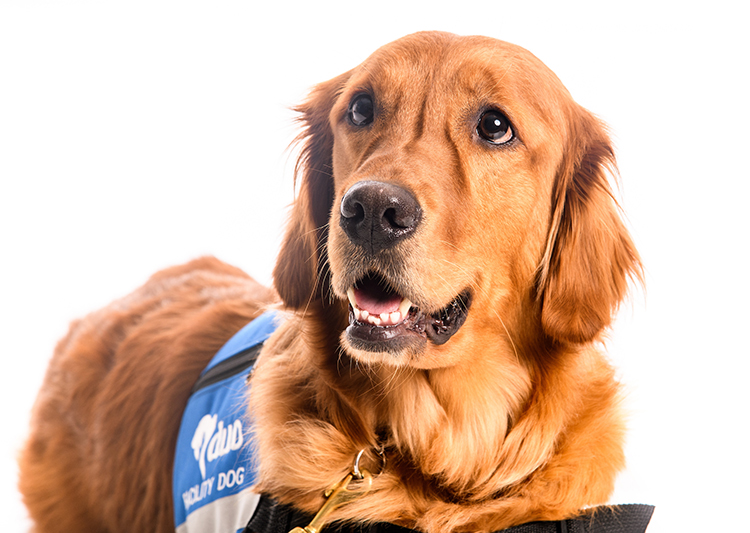Hi! My name is Link. I’m a golden retriever who works at Children's Hospital.

I love my job so much! I get to visit with patients and families while they get top-notch medical care, and that makes me very happy!
I was trained at Duo in St. Louis for two years before coming to Columbia. They taught me how to listen and behave while walking the hallways and visiting patients. These days, I love to have snugglefests with kids in the hospital to help them feel better. I also love to help kids get up and walk after surgery or being sick for a while, and I enjoy hanging out with parents, siblings and staff.
I just love people in general. I am a lover — that’s for sure!
My teammates at the hospital are Corinne, Katie, Christina and Sheila. They are part of the Child Life program. They take me all kinds of places, but I can usually be found in the pediatrics unit and the pediatric intensive care unit.
When I am at home, I like to play fetch in the backyard. I am super fast and love to run in circles! I also enjoy going for walks and playing with my human friends. My favorite snacks are peanut butter and pumpkin, but my mom says I need to be careful and eat healthy so I can work for a long time.
If you come to the hospital and see me, please use hand sanitizer before petting me because I want to help everyone stay clean and healthy!
I hope you have a pawsitive day!
Woof,
![]() Link
Link ![]()
PS: I have a very busy schedule! If you would like to meet me, please speak with your primary Child Life specialist. You can also email me anytime! My address is: linkthedog@health.missouri.edu
I usually visit with patients who are:
- Older than 2
- Free of isolation precautions and pet allergies
- Having difficulty coping with hospitalization
- Being treated for a chronic illness or life-altering diagnosis
- In need of assistance with specific treatment goals
The benefits of animal-assisted therapy include:
- Helping motivate patients towards specific goals such as increasing mobility, taking medications or eating
- Normalizing hospitalization while providing a positive experience during stressful situations
- Offering acceptance and unconditional love
- Providing developmentally appropriate distraction to patients, which can help lower anxiety and increase positive coping


